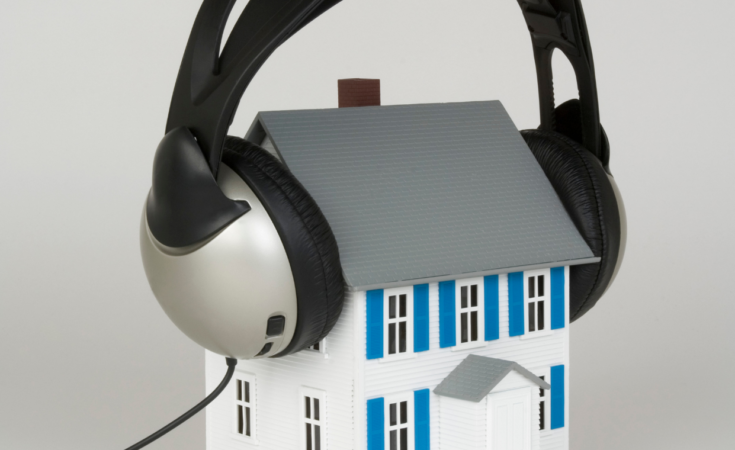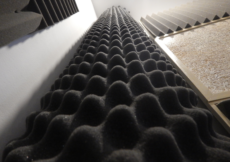We hear a lot of sounds every day, and sometimes they can be very disruptive as we go about our daily life. If you’re trying to work from home, watch a movie or sleep, and all you can hear is noise from a construction site a few streets away or the sound of your noisy neighbors arguing, it can be very frustrating.
Fortunately, there are ways to effectively soundproof a room — and they don’t have to be expensive. While there are professional methods for reducing the amount of noise you hear, there are also DIY methods you can try that won’t break the bank. Some don’t even cost any money at all.
So, if you want to learn the basics of soundproofing, what it will take to make a room quiet and some of the cheapest ways in which you can live in peace, keep reading on.
How To Soundproof A Room Cheaply – The Basics Of Soundproofing
Sound is made when objects vibrate, which makes the air around the object vibrate and the air vibrations enter your ear. Think about banging your hand on the table and how loud that would sound — this is due to the table vibrating as your hand hits it, and then that sound travelling through the air. The sound waves will also bounce off walls, floors and other hard surfaces in the room, which is why you sometimes hear echoes.
There are four main basics of soundproofing that can help to stop these sound vibrations from travelling and therefore effectively reduce the amount of noise that is heard. Some of these methods help prevent sound from getting into a room, while others help to deal with how loud a sound is one it has reached a room. Take a look below.
Add More Mass
Adding more mass to any surface will help to prevent sound from passing through it. This is because the thicker the surface is, the harder it is for the sound waves to get through. When you are soundproofing a room yourself, adding mass is usually done in the form of adding materials such as rugs, artwork, and curtains to a room, making surfaces thicker.
Seal Gaps
Sound will find its way into a room through any gaps and cracks, whether this be in the foundations of the building, around lighting fixtures, or through cracks from general wear and tear. Sound travels through air, so sealing any area where air can get through and bring sound with it will prevent you from hearing any noise.
Many people don’t realize that doors and windows are two areas of a room that often let in the most amount of noise. Ensuring there are no gaps around the window or under the door and sealing them off if you find them can stop outside noise from getting in.
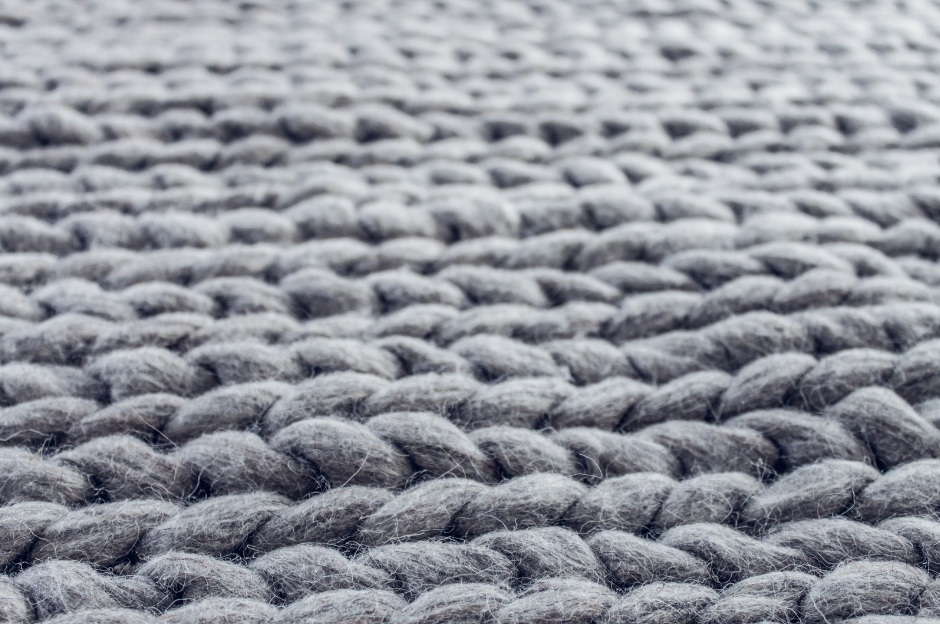
Use Soft Materials
Once you’ve sealed the gaps and made sure no sound can get into the room, you’ll want to do something about the sound already in the room. Hearing noise reverberate in echoes is frustrating, and is caused by sound bouncing off any hard surfaces you have in your room.
Soft materials actually help trap sound and prevent the waves from travelling any further. These materials could be foam, but also furnishings used to decorate your home such as wall hangings and couches.
Decouple The Sound
Decoupling is the process of separating different surfaces from each other so they vibrate independently from each other. By doing this, the surfaces do not pass the vibrations on to one another and therefore less sound is heard.
Decoupling is usually done to a wall and can help with low frequency sound. It can prevent sound from travelling from one side of a wall to the other.
Cheap Ways To Soundproof A Room
If you get a professional in to soundproof a room, you could end up spending a lot of money. However, there are ways you can DIY soundproof a space, and it can all be done on a budget. Take a look below at some of the methods and sound absorbing materials we recommend when looking to soundproof a room cheaply.
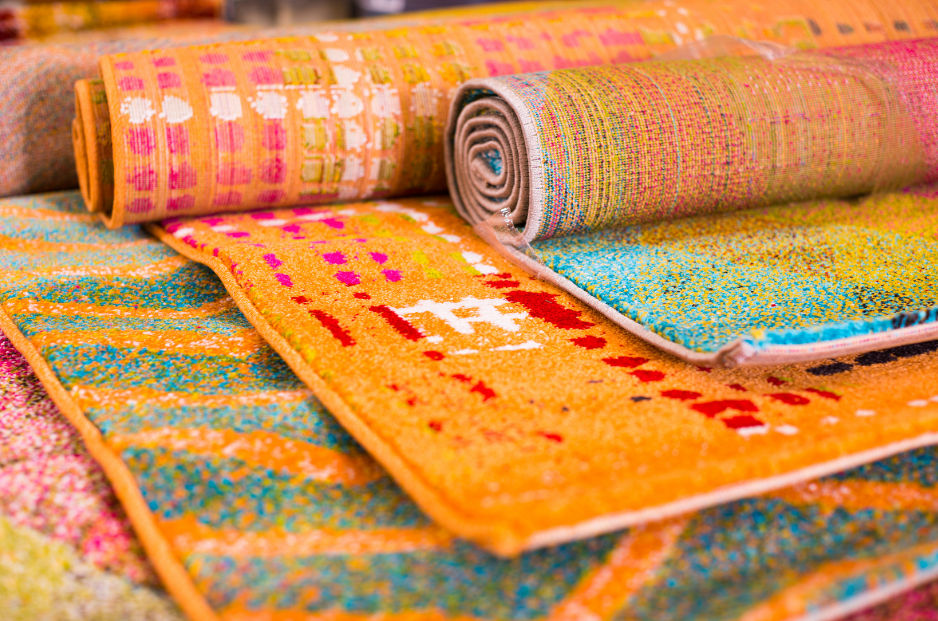
Add Some Rugs
If you have hardwood floors, you’re probably hearing quite a bit of sound from your neighbors. You might even be annoyed at the echoes you’re hearing from your own footsteps! Because wood is a hard object, it vibrates easily as sound passes through it and doesn’t do much absorbing, so you end up hearing a lot from those who live below you.
One easy way to fix this is to lay down thick rugs on the ground. If you can get a rug with a rubber backing, even better, as this will increase it’s thickness and absorb and muffle the sound. If you’d like to go one step further, laying down wall-to-wall carpet is a great way to instantly reduce noise. However, if you don’t own the house you live in, you will have to check with your landlord before you go ahead with this.
Use Foam Mats
Foam mats can be just as useful as adding rugs to your floor, but they can look a little out of place. The foam mats we’re talking about are the type you take to the gym or to a yoga class, and can be great at sound absorption and muffling sound. You can place them under furniture or under rugs if you’d like to hide them out of the way, and they’ll still do a good job.
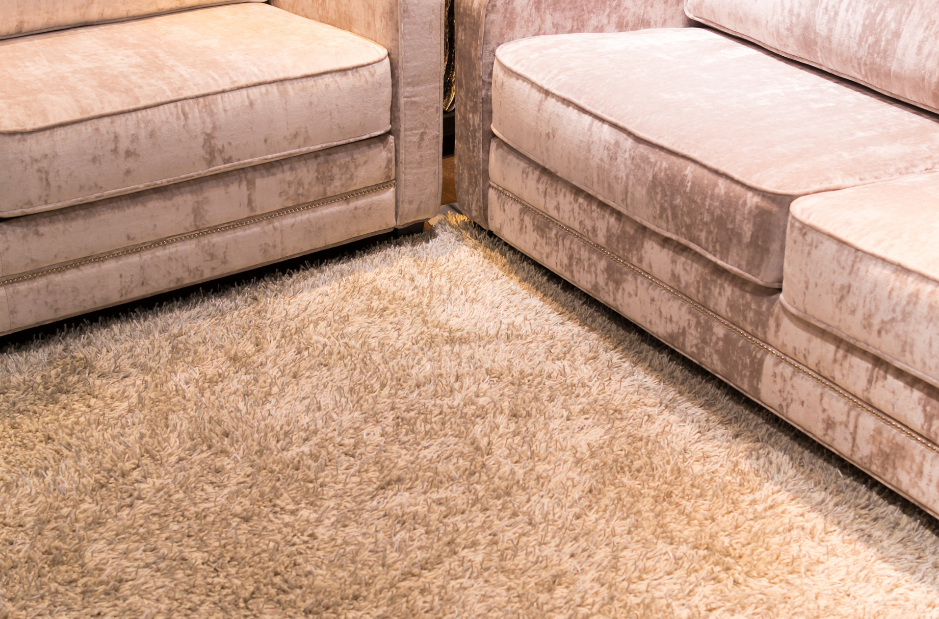
Add More Furniture
Adding more furniture to your room can help to soundproof a room. As we mentioned above, the more objects you have in the room, the more objects the sound waves will have to pass through to make a noise that you will hear.
You will want add soft materials, particularly softer furnishings such as couches, pillows, cushions and armchairs, for sound absorbing. Because the objects are made of soft material and are not hard, they will absorb the sound waves instead of letting them pass through, and won’t reverberate any noise. Therefore, you also won’t hear any echoes.
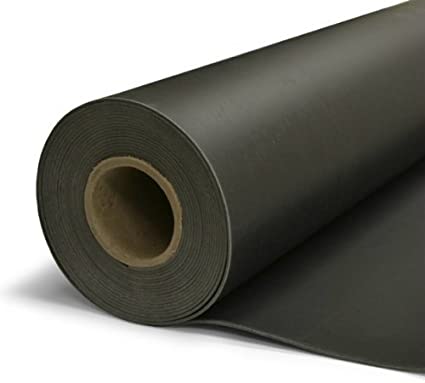
Use Mass Loaded Vinyl
Mass Loaded Vinyl (MLV) is one of the most effective materials when it comes to sound proofing. It is a heavy polymer that is very dense, so even a thin layer of MLV does just as well as a thick layer of foam.
You can add this to the ceilings and walls of the room you are trying to reduce noise in and it can be tacked, nailed, glued or screwed. You can also add MLV to your floor if you hear a lot of noise from those who live beneath you or are worried about the amount of noise you create. While it isn’t very aesthetically pleasing, you could add rugs or carpet on top of the MLV. You will need to ensure you overlap the edges when installing MLV so the room is completed protected.
MLV is so versatile that it can actually be used inside walls, too. You can put it under or over drywall, and it can also be used around ducts and pipes if you are having trouble with noise coming from these. Because MLV is waterproof, you don’t have to worry about it being near pipes either.
Hang Up Paintings and Tapestries
Walls are often hollow, so hanging up tapestries and wall hangings are another great way to add soundproofing materials to your room. Soft artwork like tapestries not only increase the thickness of the wall, but will also absorb noise and prevent echoes.
While MLV works very well at soundproofing when added to walls, it doesn’t look that aesthetically pleasing. However, adding artwork to your walls does, and you can make sure the rooms in your house really feel like home.
For double soundproofing, you could add MLV to the walls and then add tapestries, paintings and wall hangings on top. This way, you’re getting the best materials but the decor still looks the way you want it to.
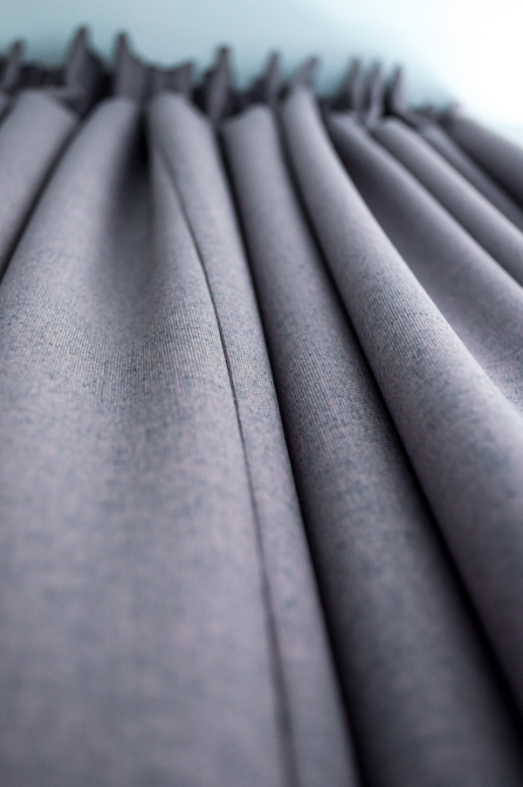
Install Thick Blinds Or Curtains
Aside from adding furniture and hanging up paintings and tapestries, you can also add thick noise reducing curtains, blinds or drapes. This will add an extra layer of soundproofing to windows, which are often a culprit for leaking sound. If the curtains are thick enough, they will absorb sound instead of letting it pass through the window and into the room. What’s more, they’re usually blackout curtains and also help to block out any excess light, making them great for bedrooms.
Make sure you get soundproof curtains that are wider and longer than the window you are trying to cover, so you don’t run the risk of buying some that are too small and don’t do the job properly.
If you decide to use blinds instead of curtains, we recommend you go for soft blinds. While metal or wooden blinds can be thick, not only can the hard materials bang against each other if there is a draft coming through, but they could also potentially reverberate any noise and cause echoes.
Use Weatherstripping Tape
While installing thick blinds or curtains are a good option, if you have large gaps in your windows, or even your doors, they’re not going to do much. Windows are notoriously difficult to soundproof and you may hear noise or feel air coming through your window.
Windows are installed with a weatherstripping seal that helps to prevent air from getting into a room when the window is closed. However, weatherstripping is prone to decay and will need to be replaced every so often.
You can replace weatherstripping materials yourself by using weatherstripping tape. All you need to do is thoroughly peel off any existing seal and replace the tape. You should find noise is reduced once the new tape is in place and your windows are shut.
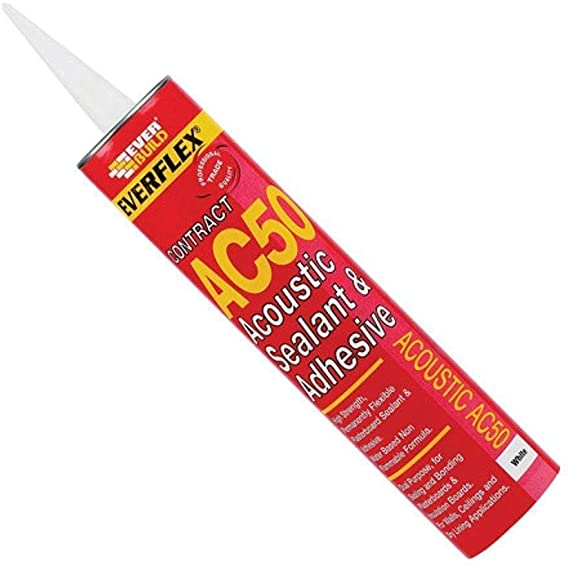
Use Acoustic Caulk
Using a sealant like acoustic caulk is a great way to DIY soundproof your home. You can use a sealant on areas where there are gaps and cracks, for example where the walls meet the ceiling or around light fixtures. As we mentioned above, sound will find their way through these cracks, so caulking these areas can prevent vibrations from leaking through. Routinely check for any cracks in your walls and caulk them as soon as you find them.
You can use caulk on top of weatherstripping tape around door frames and windows too, to seal any extra areas. All you need to is to get a caulking gun and apply it in the same way you do to cracks in the ceiling. Some caulk is even paintable after it has dried.
Caulk is also great for sticking down MLV, while also adding an extra layer of soundproofing. Switch it out instead of regular glue when applying MLV.
Use A Door Sweep or Draft Stopper
You could soundproof an entire room perfectly, but if there is a gap under the door, you’re still going to end up hearing sound. To prevent this from happening, you can install a door sweep and nail it to the bottom of the door. These are easy to buy and are usually made out of rubber, metal or plastic.
The rubber of the door sweep should drag against the ground as you try to open the door. This is what prevents it from letting in unwanted noise. It can make the door a little difficult to open, but it is worth it.
If you don’t fancy nailing or gluing something to the bottom of your door, you can use a draft stopper instead. You can buy these from many different stores or even have a go at making one yourself out of household items such as rice and an old pillow case.
Use Room Divider Curtains
Room dividing curtains are thicker than regular curtains and can be used to divide a room up into smaller areas. With a room now broken up into smaller rooms, sound won’t be able to travel as far and there will be less reverberations and echoes as the curtains will absorb any excess noise.
This can be a little difficult to install. You need to make sure the curtains reach all the way to the floor, otherwise sound will seep through. You also probably won’t be able to install them on a curtain rod like the ones you use above your windows and you may need to use a tension rod or ceiling track instead.
Use Soundproof Blankets
If your walls or doors are hollow, you can hang thick, soundproof blankets or moving blankets on them. You can glue or tack these thick blankets to the wall, or even use them as curtains. These are not the most attractive blankets, and can make a room look dull. Think about covering soundproof blankets with artwork and tapestries if you decide to use this method.
Cover Air Vents
An air vent is effectively a hole in the wall, and, as we mentioned earlier, sound will seep through any hole in the wall it finds. To deal with this, you can block the air vent. Blocking the air vent will block the flow of air, but, if your room has windows, this shouldn’t be an issue.
To block the air vent we recommend you either cover it with dry wall, fill it with sealant, or place soundproofing foam inside. If you don’t like the sound of any of these, you could cover it with a soundproof blanket or even just place a piece of furniture in front of it to help reduce some of the noise.
Use Sound Deadening Paint
Sound deadening paint is a water-based paint that can be used to deaden acoustic noises in a room. The paint has microscopic ceramic particles and other fillers that absorb and decrease sound movement, and it is basically odor free and very easy to apply.
The paint is quite thick, with one gallon covering around 150 square feet (sq ft). It is a finishing coat and can be used on metal, wood, plaster and ceilings.

Place Foam Around The Room
Another effective sound deadening material is foam. It can be cut into many different shapes and sizes and again placed on the wall or the ceiling like MLV. It can also be placed around different appliances that may be making excess noise. Acoustic foam is light, so it can either be tacked or glued to the walls or ceiling.
Acoustic panels come in either flat and sculpted textures, and foam panels with ridges can trap and dampen sound. It works well to control mid to high-range frequencies, and the thicker and denser it is, the better it works as sound deadening insulation. Acoustic foam panels are particularly useful for rooms such as recording studios or movie theaters, as echoes are also controlled, but sound-quality is actually improved.
Professional Ways To Soundproof A Room
Now we have looked at some of the cheap ways to soundproof a room, you might be interested to know some of the more professional ways to soundproof a room. These methods are harder and more expensive, costing you up to $10,000 depending on the work you have done. And, if you decide to go for them, we recommend you get someone in to do it who really knows what they are doing.
Install Floor Underlayment
Floor underlayment is made of foam, cork, rubber or felt and can be placed between flooring and subflooring to help absorb vibrations and therefore dampen sound and effectively soundproof your floor.
Floor underlays can be used under stone, ceramic, concrete, laminated or hardwood floors. The downside to floor underlayment is that it is not that easy to install — it requires you to pull up your floorboards and put them back down again after installing the underlay.
Floor underlayment isn’t necessarily expensive and is excellent at soundproofing, especially from those who live below you or any other excess sound that might be coming up though your floorboards. However, it can be expensive to install, so this is something to think about.
Add Another Layer Of Drywall
One of the main basics of soundproofing is the fact that adding mass to an object decreases the amount of sound that can pass through it. Therefore, if there is a lot of sound coming through your existing walls, adding an extra layer of drywall to it can help to reduce the noise heard as it increases the number of layers the sound waves have to pass through.
Replace Hollow Doors
We suggested above using soundproof blankets if your door is hollow. However, this won’t completely fix your noise problem, and, if your door is hollow, you will probably be able to hear noise from the room next door, no matter what you place in front of it.
To tackle this issue, you can replace any hollow doors you have with solid doors. This can be expensive but, if you know what you are doing, you might be able to fit soundproof doors yourself.
Install Soundproof Windows
As we mentioned above, windows let in a lot of noise and can be very difficult to soundproof. To truly soundproof them, you may need upgrade your windows and have PVC windows installed. The window frames are a lot heavier and the glass can be double glazed or even triple glazed. However, you will have to get a professional in to install them in your home.
Insulate The Walls
Just like adding an extra layer of drywall, insulating the walls will add mass to them and prevent sound waves from travelling through. The easiest and most effective way to insulate walls is from the inside out.
However, to do this, you’ll need to take off any existing drywall and start basically from scratch. If you don’t have experience building soundproof walls, we recommend you get a professional in to add this sound insulation.
Free Ways To Soundproof A Room
Most methods of soundproofing a room require adding things or materials to the room to help absorb the noise. This is always going to cost a bit of money, so are there any free ways to soundproof a room? Let’s take a look.
Use Noise Cancelling Headphones
If noise from your neighbors or a nearby construction site is disturbing you during the day while you are trying to work, listen to music or watch TV, you may want to buy some noise cancelling headphones. With these, you’ll be able to concrete and hear sounds from your devices without being interrupted.
Use White Noise
White noise can be a fantastic way to help drown out unwanted sounds in your home. White noise works by generating multiple frequencies at once, so it effectively blocks out lots of different noises. You can use a white noise machine, or you can download a white noise app on your phone. Downloading an app on your phone will not cost you anything and may solve many of your problems.
White noise also has a calming effect, and can be used for meditation and can even help you to sleep better. For the best sound coverage, we recommend you set up white noise in every room, and therefore you can enjoy it all around your home.
If you don’t want to download an app or use a white noise machine, there are a few appliances in your home that generate their own white noise. These include air conditioning and fans. However, it may cost you in the long run to have these appliances running all the time.
Use Earplugs
Ear plugs are a temporary fix, but they are super cheap and an option that can really help, especially if the noise from your neighbors is keeping you up at night. You can use noise cancelling ear plugs as you are falling asleep to help reduce any noise that is heard.
Rearrange Furniture
We spoke above about how adding furniture to your rooms can help reduce the amount of noise heard as the furnishings, particularly soft ones, will absorb the noise and block the sound from travelling further. However, adding furniture can be expensive. Instead, you can rearrange the furniture you already have in your home to obtain better soundproofing.
Place any thick or heavy furniture such as bookcases or drawers against walls. This will make the wall thicker, and, as we mentioned above, the thicker a surface is, the harder it is for a sound to pass through.
How To Soundproof A Room Cheaply: Summary
You want to live your life in peace and without sounds from your neighbors or other outside sources affecting it. However, if you want professional or permanent solutions to excess noise, you might have to fork out a bit of cash. While laying down floor underlayment might sound easy, don’t try to attempt any of these solutions without making sure you really know what you’re doing.
Fortunately, as you can see above, there are many methods you can try yourself that are much easier and can be done on a budget to create a soundproofed room. Some are as simple as laying down extra rugs or even rearranging some of your furniture — they won’t cost a lot and you should receive great soundproofing results. Which methods are you going to try?

